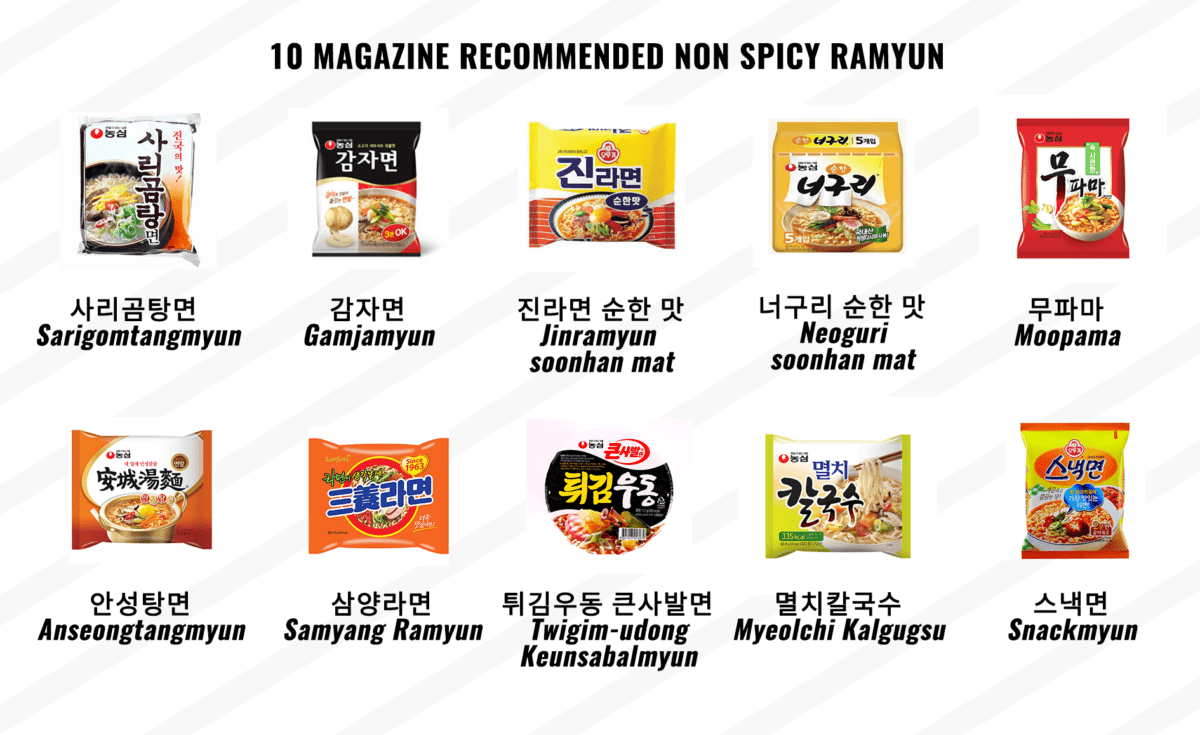Korean food is known worldwide for the rich flavour of spicy pepper and red pepper sauce. However, it could be alarming for a lot of travelers, or foreign residents, who are not big fans of the burning taste on their tongue. Frankly speaking, spicy food is unavoidable in most Korean restaurants or menus, however, it isn’t beyond help. There is a way around everything and today 10 Magazine will help you navigate around Korea’s fiery culinary path to it’s more milder dishes.
First off, let’s talk about technical terms and phrases you might want to know by heart for your own sake. It is understandable that for beginners, it could be hard to pronounce these words, naturally. So we would really recommend you to at the very least jot down the ones with *** three stars!
How to say in Korean :
Is there a dish that is not spicy here?
- 여기엔 안 매운 메뉴가 있나요? Yeogi-en an maeun menu-ga itnayo? ***
I’ll have the non- spicy one, please.
- 맵지 않은 것으로 주세요 maebji anheun geotseuro juseyo
Please do not make it too spicy
- 너무 맵지 않게 해주세요 neomu maebji anh-ke haejuseyo
Make it less spicy, please.
- 덜 맵게 해주세요 deol maebke haejuseyo ***
Make it not spicy, please. OR Make it just a little spicy, please.
- 안 맵게 해주세요 an maebke haejuseyo OR 약간 맵게 해주세요 yak-kan maebke haejuseyo ***
Is this one really spicy?
- 이거 많이 매워요? Igeo manhi maewoyo?
What’s the least spicy one?
- 제일 안 매운 것이 뭐예요? Jeil an maeun geotsi mwoyeyo?
I have a child so please don’t make it spicy
- 아이가 있으니까 순한맛으로 주세요 Aiga isseunikka sunhan-matsseuro juseyo
I have a child here so is there a dish that is not spicy?
- 아이가 있는데 안 매운 메뉴가 뭐가 있나요? Aiga itneunde an maeun menu-ga mwoga itnayo?
Many times, a spicy version of a non-spicy dish is written with 얼큰 (
Mild Alternatives
There are alternate menus you could order at some restaurant, though it is not guaranteed that it will be offered everywhere, but you could try to search or ask for the option. For example, instead of the typical 떡볶이 (

Non-spicy Korean Ramyun
As far as Korean dishes go, Ramyun is definitely included in everyone’s mind. However, there are hundreds of selections of ramyun Korea have to offer. Here is a list of ramyun that is rated to be mildly spicy but still delicious! Leave a comment with some other mild alternatives below!

How to raise your spicy food tolerance level: The Korean dish version.
It is commonly known that if you repeatedly eat a certain level of spicy food that your taste buds will adjust, therefore, leveling-up in this game of spice!
So, what are some starter dishes you could try at the beginner’s level? There are dishes like the average 김치 (kimchi) side dish, 부대찌개 (budaejjiggae), 짬뽕 (jjamppong), 진라면 매운맛 (jin ramyun maeun mat), or the 간장찜닭 (kanjang jjimdak).
When the menus mentioned above don’t bother your taste buds any longer, it’s time to step up your game. We are going intermediate’s level with 떡볶이 (tteokbokki), 매운카레 (maeun curry, or spicy curry), 제육덮밥 (jeyugdeopbab, or spicy stir-fried pork with rice), 닭도리탕 (dakdoritang, spicy chicken stew), and 얼큰국수 (eolkeungugsu or spicy noodles) Yes, it could be intense, but hold on tight to your cold metallic cup of water and this, too, shall pass. It is a big step from the beginner’s level but you can do it! If it is too much, you can try to use the phrases we have studied together earlier on this article to ask for them to make it less spicy, as well. Now you can practice your Korean while enhancing your spice tolerance at the same time.
If you thought those menus were too mild and it does not burn your tongue any longer, we suggest you try these menus we’ve selected to be in the advanced level, so prepare a lot of tissues because someone’s about to cry a river. Menus such as 낙지 (Nakji) or 쭈꾸미볶음 (Jjuggumi
However, note that each restaurant have different recipes and the menus in the intermediate level could be beyond advanced level, too, if you are unlucky. So, pick the restaurant wisely, or memorize the given phrases well enough beforehand!
One last small tip, if the menus are ever too spicy for you to handle, try order 주먹밥 (the rice you squeeze into balls) or 콜피스 (cool-peace, the yogurt drink) as it will lessen the painful burn on your tongue. If you’re eating at home or a convenience store, have milk instead of water to wash down the spice and save yourself from turning lobster-red! They’ll really help!





